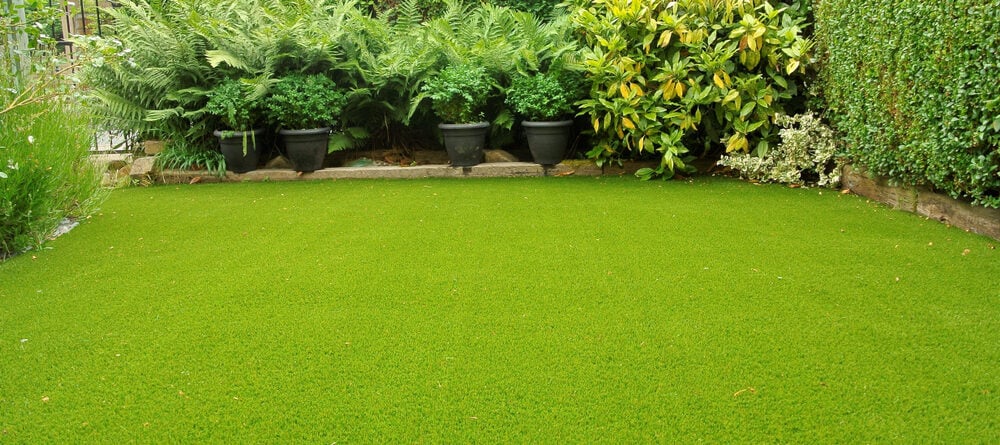For a successful artificial grass installation, start by evaluating your space and measuring dimensions accurately. Choose high-quality materials and gather essential tools like a utility knife and measuring tape. Prepare the site by clearing debris and compacting the soil for a stable base. Lay out the grass, trimming excess and securing with staples or adhesive, ensuring seams overlap correctly. Finally, maintain your new lawn by regularly removing debris and cleaning it. By following these steps, you’ll create a beautiful outdoor area that complements your lifestyle. Keep going to discover more details and tips for your project!
Assess Your Space
Before diving into the installation process, you need to evaluate your space to guarantee it’s suitable for artificial grass. Start by measuring your site dimensions accurately; this helps you determine how much Grass that Lasts you’ll need. Consider the layout, ensuring there’s enough room for any desired features like pathways or play areas.
Next, think about drainage considerations. Proper drainage is essential to prevent water pooling and maintain the integrity of your grass. Check for any existing drainage issues and plan how to address them. If your area slopes, you may need to level it out or install a drainage system.
Choose the Right Materials
When installing artificial grass, choosing the right materials is essential for a successful outcome.
You’ll want to focus on the quality of the turf and make sure you have all the necessary installation accessories.
Selecting high-quality materials not only enhances the look but also the durability of your new lawn.

Quality of Turf
Selecting the appropriate materials for your artificial grass is crucial to guarantee durability and a natural appearance. When you’re looking for turf, focus on options that offer high turf durability, as this assures your investment withstands wear and tear over time.
Opt for grass with a high stitch rate and dense fibers; these features contribute to longevity and resilience.
Additionally, consider the turf aesthetics; the color, texture, and height of the grass can notably impact how realistic it looks. Choosing a product that mimics natural grass will enhance your landscape’s visual appeal.
Always research reputable brands and read reviews to make an informed choice. Balancing durability and aesthetics will lead to a successful and satisfying artificial grass installation.
Installation Accessories Needed
Choosing the right installation accessories is essential for ensuring your artificial grass lays flat and stays in place over time.
Start with high-quality adhesive, as it’ll bond your turf effectively and maintain its longevity.
You’ll also need infill material to enhance durability and provide a natural feel, which contributes to overall turf aesthetics.
Don’t forget about a reliable weed barrier to prevent unwanted growth beneath your grass.
For proper installation techniques, invest in spikes or nails to secure the edges firmly.
Finally, a power broom can help distribute the infill evenly and fluff the fibers for that lush appearance.
Gather Necessary Tools
Before you start your artificial grass installation, you need to gather all the necessary tools.
This includes essential equipment for the job and any safety gear to protect yourself during the process.
Having everything ready will make your installation smoother and more efficient.
Essential Installation Equipment
Gathering the right tools is vital for a smooth and successful artificial grass installation. You’ll need a few key items to guarantee you can execute various installation techniques effectively.
Start with a utility knife for cutting the turf types to fit your area perfectly. A measuring tape helps you get accurate dimensions, while a shovel and rake are essential for preparing your base.
Don’t forget a compactor to level the surface and a trowel for spreading infill material. Additionally, you might want a seam tape and adhesive for connecting sections of grass seamlessly.
Safety Gear Requirements
In addition to your installation tools, making sure you have the right safety gear is key to keeping you protected during the project.
First, grab a pair of safety goggles to shield your eyes from debris and dust. This simple step can prevent injuries that might occur during cutting or trimming the artificial grass.
Next, invest in knee pads; they’ll provide cushioning as you kneel on hard surfaces, making your installation more comfortable.
Remember, a little preparation goes a long way in ensuring your safety.
Don’t overlook gloves, as they can protect your hands from sharp tools and rough materials.
Equip yourself properly, and you’ll not only work efficiently but also stay safe throughout the installation process.
Prepare the Site
To guarantee a smooth installation, you’ll need to clear the area of debris, grass, and any existing landscaping. Start by removing any rocks, roots, or weeds that could interfere with your artificial grass.
Next, assess the site drainage. Proper drainage is essential to prevent water pooling under your grass. You may need to install drainage pipes or adjust the slope of the area to make certain water flows away effectively.
Once drainage is addressed, focus on soil preparation. Compact the soil to create a stable base and add a layer of crushed stone or gravel for additional support. This step will help your artificial grass withstand foot traffic and maintain its appearance over time.
Now you’re ready for the installation!
Install the Artificial Grass
Begin by laying out the artificial grass over the prepared area, ensuring it fits snugly against the edges and contours of your landscape.
Once you’ve positioned the grass, use sharp scissors or a utility knife to trim any excess material. This step is essential for achieving a clean look and maximizing the artificial grass benefits, such as reduced maintenance and water conservation.
Next, apply the appropriate installation techniques by securing the edges with landscape staples or adhesive, depending on your preference.
Make sure to overlap seams by at least 2 inches and secure them with seaming tape and adhesive for a seamless appearance.
